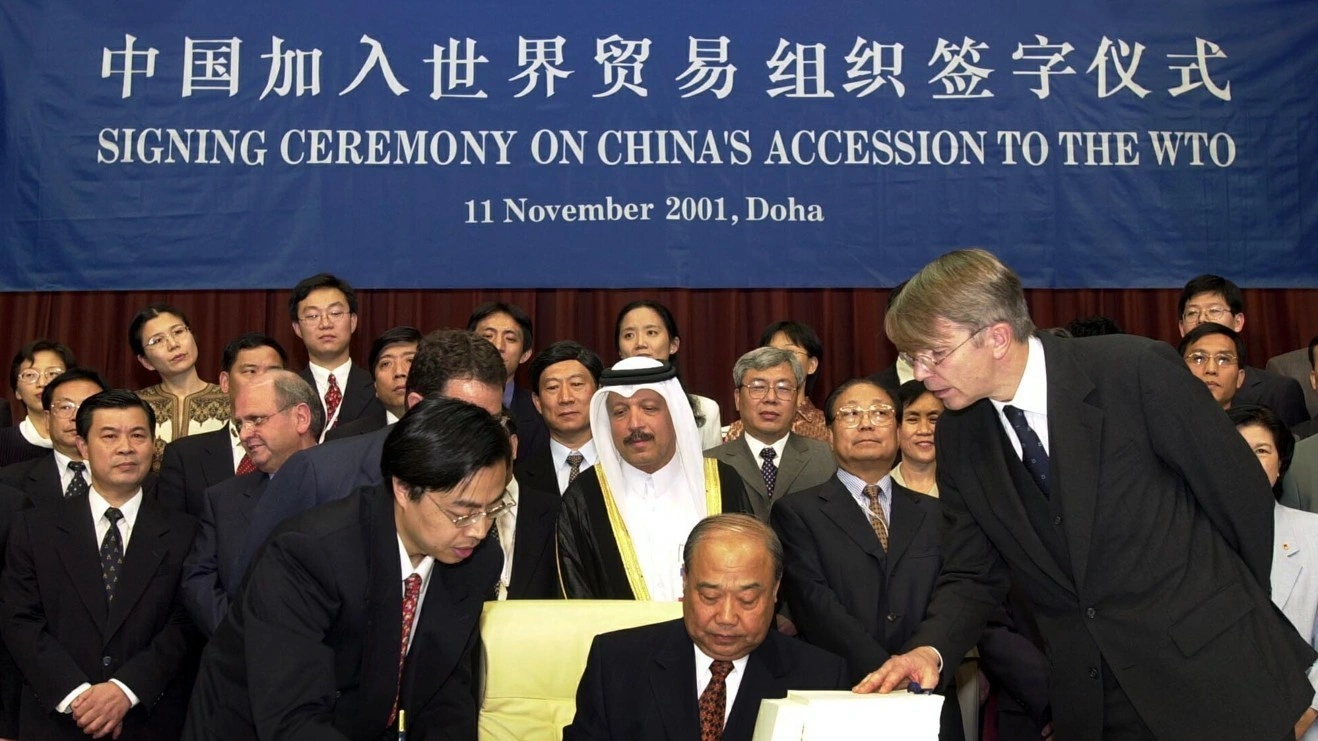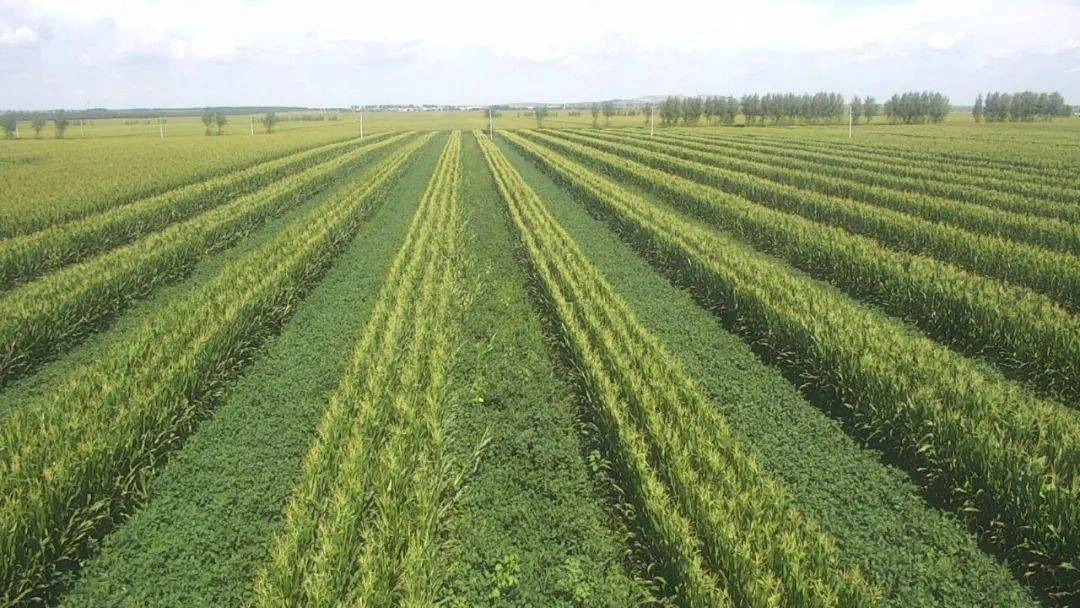How China Won the Soybean War Against the U.S.
 Workers air soybeans in Beian, Northeast China’s Heilongjiang province
Workers air soybeans in Beian, Northeast China’s Heilongjiang province
China is the world’s largest consumer and stockpiler of soybeans. However, its domestic soybean production is low, and the majority of its supply relies on imports. The country is the trade destination for more than 60% of the world’s soybean imports. But why has China been increasing its soybean reserves and emphasizing self-sufficiency?, Because in the past, it has long suffered at the hands of the U.S.
Before 2001, China made multiple attempts to join the WTO, but each time, the U.S. rejected its application. One of the most difficult conditions in the negotiations was that China had to sign an agricultural cooperation agreement and open its grain market to American products. The U.S. primarily exported wheat and soybeans and demanded full market access. While China attempted to negotiate a compromise, at the very least, it had to open its market to one of these products. If China refused to open either, the U.S. would block its WTO entry, as a single country’s veto could prevent accession—and in this case, that country was the United States.
After careful deliberation, China decided to open its soybean market while keeping wheat protected. The reasoning was that, although soybeans were more expensive, their yield was lower, and they were primarily used for oil production and livestock feed. Even if there were supply issues, the worst outcome would be a shortage of meat. However, wheat was a staple food, and keeping it protected ensured that China’s food security remained intact.
In 2001, China joined the WTO and upheld its agreement by opening its soybean market to the U.S. Almost immediately, an influx of American soybeans flooded the Chinese market, decimating the domestic soybean industry. American soybeans, which were genetically modified, benefited from vast black soil farmlands, leading to significantly higher yields and lower costs. On top of that, U.S. farmers received agricultural subsidies from the federal government, giving American soybeans a crushing price advantage. Even after being shipped across the ocean, the landed price of American soybeans was still 50% lower than that of Chinese soybeans.
 China joined the WTO in 2021
China joined the WTO in 2021
Faced with such a drastic price gap, Chinese soybean processing companies quickly stopped purchasing domestic soybeans. As domestic prices plummeted, farmers saw no incentive to continue planting, and China’s soybean production began to decline rapidly.、
By 2002, China’s soybean production had fallen drastically. By 2003, it had been reduced to a fraction of what it was before WTO accession, with nearly all domestic soybean processing companies relying on American soybeans. Then, with Chinese soybean production nearly wiped out, American grain traders made their move.
In August 2003, a month before the U.S. soybean harvest, the U.S. Department of Agriculture (USDA) suddenly announced that drought conditions would cause a significant reduction in soybean yields. Over the next four months, the USDA continued to revise its forecast downward, further reducing the expected soybean inventory.

Triggered by USDA data, global soybean prices skyrocketed from over $300 per ton to over $600 per ton—surpassing the price of Chinese soybeans. Since it takes time to grow soybeans, China couldn’t rely on domestic production to fill the gap in just a few months. However, the $600-per-ton price tag was prohibitively high, effectively doubling anticipated costs. Chinese soybean processors refused to accept such high prices and instead reduced imports, relying on their existing stockpiles while hoping that prices would eventually stabilize. There were also rumors that the U.S. government might intervene to curb the soaring soybean prices, so many companies chose to wait. However, China’s soybean production was severely insufficient, and the U.S. controlled the global soybean export market. It wasn’t a simple matter of refusing to buy.
By March 2004, the USDA announced that it would not increase soybean production. This sent global soybean prices soaring again, rapidly climbing to over $750 per ton, with no signs of stopping. At this point, panic set in among Chinese soybean companies. After holding out for six months, their reserves had been depleted, and the USDA had made it clear there would be no intervention. Seeing no end to the price increases, Chinese soybean processors scrambled to sign massive long-term procurement contracts with American grain traders. Once China’s soybean companies had locked themselves into these high-priced contracts, U.S. grain traders tightened their grip. Since other countries’ purchases were relatively small, their primary target was China.
After securing these high-value contracts, the USDA suddenly released two major announcements. First, the U.S. government, out of concern for domestic needs, would implement policies to encourage soybean production. Second, previous reports about soybean shortages were inaccurate due to statistical errors. There was actually no significant shortage, and there was no need for panic buying. While the USDA claimed it had penalized staff internally for the errors, the impact of these announcements was immediate—within a month, soybean prices collapsed from $750 per ton to about $300 per ton, returning to pre-crisis levels.
Chinese soybean companies were left in shock. If they followed through with the contracts, they would suffer massive losses. If they defaulted, they would have to pay exorbitant penalties. After weighing their options, many chose to default, as even after paying fines, the losses were still lower than purchasing soybeans at inflated prices.
In response, the four major American grain traders jointly sued Chinese companies for breach of contract, demanding over $5.4 billion in compensation. If China refused to pay, the U.S. threatened a global soybean embargo and a lawsuit in the WTO. The fallout was devastating—within a year, nearly all of China’s soybean processing companies had gone bankrupt. Of the 1,000 soybean processors in China in 2003, only about 90 survived by the end of 2004, 64 of which were controlled by foreign investors. China’s independent soybean processors had been virtually wiped out, with only a handful of state-owned enterprises left standing.
The damage extended beyond processors to farmers. By late 2003, soybean prices had surged past $540 per ton, making soybean farming highly profitable. By March 2004, prices soared to $750, prompting many farmers to plant soybeans in April. But after the USDA’s announcements, prices plummeted to $300 per ton by June. At that point, it was too late—farmers had already planted their crops and had no alternatives. When the soybeans were harvested in August, prices remained stuck at $300, causing massive losses. Many farmers lost years of savings and swore never to plant soybeans again.
By 2004, American grain traders had monopolized China’s soybean industry from production to processing. To prevent further manipulation, China had to take action. However, U.S. grain traders controlled both the cheapest production and the largest supply, giving them absolute pricing power.
In 2004, when U.S. traders drove soybean prices to historic lows, attempting to wipe out Chinese farmers completely, the Chinese government stepped in. State-owned China Grain Reserves Group also known as Sinograin, began stockpiling vast amounts of soybeans—buying both domestic and imported soybeans at low prices and filling its storage facilities as quickly as possible.

In 2005, Sinograin continued accumulating soybeans. It conducted this stockpiling operation in secrecy, and to this day, no one knows exactly how many soybeans Sinograin stored during 2004–2005. If American grain traders had maintained the status quo, China’s reserves would have remained unused. However, after gaining full control of China’s soybean industry, U.S. traders only stayed quiet for a year before attempting to repeat their old tactics.
In 2006, citing natural disasters and reduced soybean yields, U.S. grain traders started restricting soybean exports and driving up prices. But unlike in 2004, this time China had reserves. When the price reached an unacceptable level, Sinograin began releasing its stockpiles in a controlled manner, selling soybeans at slightly below market price every ten days. Despite Sinograin’s moves, U.S. traders continued to push prices upward. In response, China increased the frequency of its releases—starting with ten-day intervals, then weekly, and eventually every three days. At the time, the U.S. traders remained unfazed, continuing to limit exports to sustain high prices. This standoff persisted until the 2008 global financial crisis, which devastated financial markets across Europe and the U.S., dragging the global grain market down with it. Only then did soybean prices finally collapse.
Interestingly, just before the 2008 Beijing Olympics, Sinograin announced that China’s soybean reserves had become excessive, with many soybeans in storage having exceeded their shelf life and becoming unsuitable for consumption. The corporation sought partnerships with livestock businesses to offload the stockpile as animal feed. This announcement further drove down soybean prices.
By the end of 2008, soybean prices had plummeted to a historic low, and Sinograin took advantage of the situation by massively restocking its warehouses, replenishing all the reserves it had sold at high prices over the previous two years. The corporation also continued expanding its storage capacity, ensuring that China could maintain a robust soybean reserve. The exact quantity of soybeans held by Sinograin remains a state secret, but independent estimates from various organizations suggest an astronomically high figure.
In 2020, amid the COVID-19 pandemic, global grain production declined, and eleven countries and regions suspended soybean exports to China. Yet, China’s soybean supply remained unshaken, thanks to its vast reserves.
When China first joined the WTO, the U.S. seemed to suffer a “natural disaster” every few years, causing massive soybean shortages. However, after China built extensive soybean storage facilities, these disasters just disappeared, and U.S. soybean production became remarkably stable—unaffected by floods or droughts. Who would have thought that Sinograin’s soybean reserves could control U.S. weather?
In recent years, China has not only expanded its soybean reserves but has also boosted its domestic production capacity. For example, intercropping soybeans with corn at optimal spacing has maximized land use and increased
crop yields. According to official data, China’s grain production has exceeded 650 million tons for nine consecutive years, with soybean output stable at over 20 million tons.
 This model refers to the practice of alternating the planting of soybeans and corn on the same field in a strip pattern or at a fixed row spacing.
This model refers to the practice of alternating the planting of soybeans and corn on the same field in a strip pattern or at a fixed row spacing.
Compared to 20 years ago, China has reversed the power dynamics in agricultural trade with the U.S. If Trump continues to seek a Trade War II against China, it might not be China that should be worried—but American grain traders and soybean farmers.
Editor: Li Jingyi





Anonymous
Are the sources for the numbers in this article?
Anonymous
It’s not hard go find soybean price historic data on the web. Go to macrotrends dot net, for example. It shows prices per bushel but we can clear see the price fluctuations described by article in the chart.
Anonymous
Great article! Free market and government intervention should work hand in hand for the stability and prosperity of overall economy of a country and the world.
Anonymous
Rapacious capitalists turn everything into a profit, hunger and sickness being the most profitable
Anonymous
How US major grain traders had manipulated to control the soy bean market in China is very well explained in simple terms to readers. Thank you.
gus auyeung
Who control food control the people, who control energy control whole continents, who control money control the world–Henry Kissinger.
Anonymous
It’s a really fascinating story. China learns.